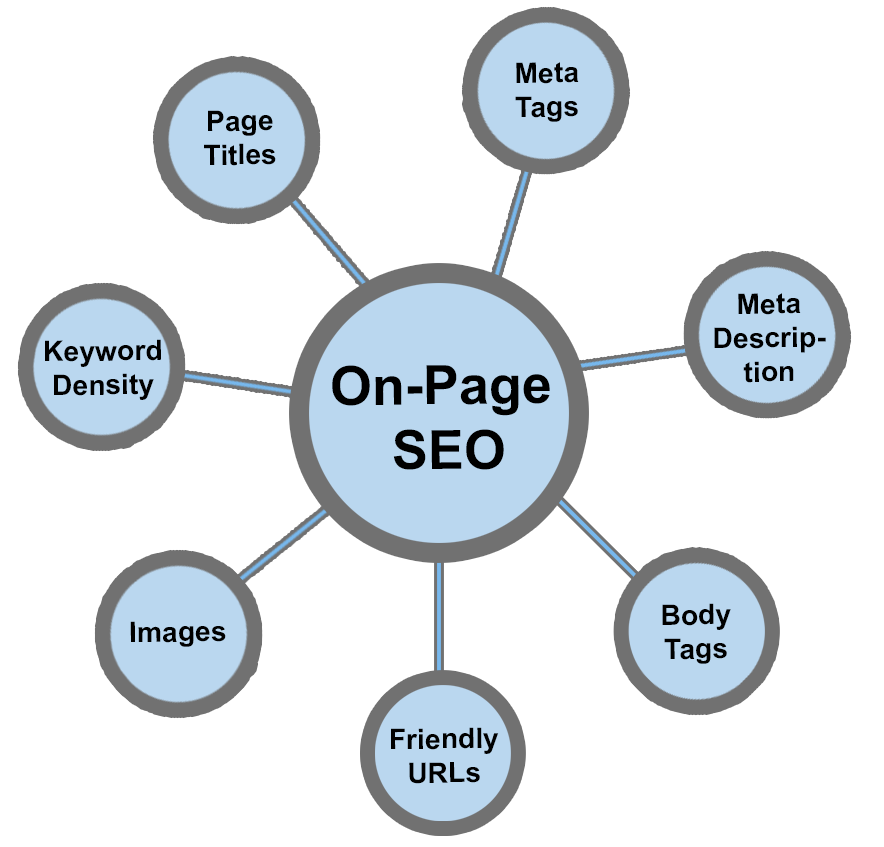On-page SEO optimization refers to the process of optimizing individual web pages to improve their visibility and relevance for specific target keywords or topics. This optimization focuses on elements directly within the web page itself. Here are some key aspects of on-page SEO optimization:
Keyword Research: Identify relevant keywords and phrases that your target audience is likely to use when searching for your products, services, or information related to your business.
Title Tags: Optimize the title tag of each web page to include the primary keyword or key phrase. Keep the title tag concise (around 50-60 characters) and compelling to attract clicks in search results.
Meta Descriptions: Write compelling meta descriptions that accurately summarize the content of the web page and include relevant keywords. Although meta descriptions don’t directly impact rankings, they can influence click-through rates.
Headings (H1, H2, etc.): Use headings (H1, H2, H3, etc.) to structure your content logically and make it easier for both users and search engines to understand. Include target keywords in headings where appropriate.
Content Optimization: Create high-quality, relevant, and comprehensive content that addresses the needs and interests of your target audience. Incorporate target keywords naturally throughout the content, but avoid keyword stuffing.
URL Structure: Optimize the URL structure to be descriptive, concise, and include target keywords when possible. Avoid using dynamic parameters and irrelevant characters in URLs.
Image Optimization: Optimize images by using descriptive filenames, alt text, and captions that include relevant keywords. This not only improves accessibility but also provides additional context to search engines.
Internal Linking: Create a logical internal linking structure within your website to help search engines discover and index your pages more effectively. Use descriptive anchor text that includes relevant keywords.
Mobile Optimization: Ensure that your web pages are mobile-friendly and responsive, as mobile usability is a significant ranking factor for search engines like Google.
Page Speed Optimization: Improve page loading speed by optimizing images, minifying CSS and JavaScript files, leveraging browser caching, and using content delivery networks (CDNs) to deliver content more efficiently.
Schema Markup: Implement schema markup (structured data) to provide search engines with additional context about your content, such as reviews, ratings, events, and FAQs.
User Experience (UX): Prioritize user experience by creating clear navigation, easy-to-read content, intuitive design, and fast-loading pages. Positive user signals can indirectly impact search rankings.

